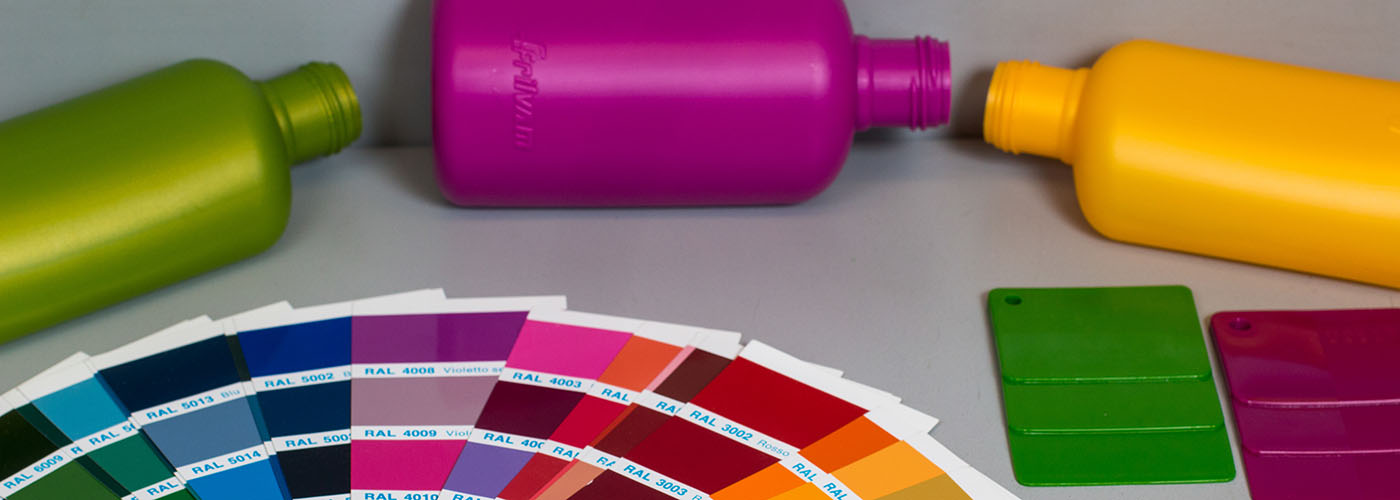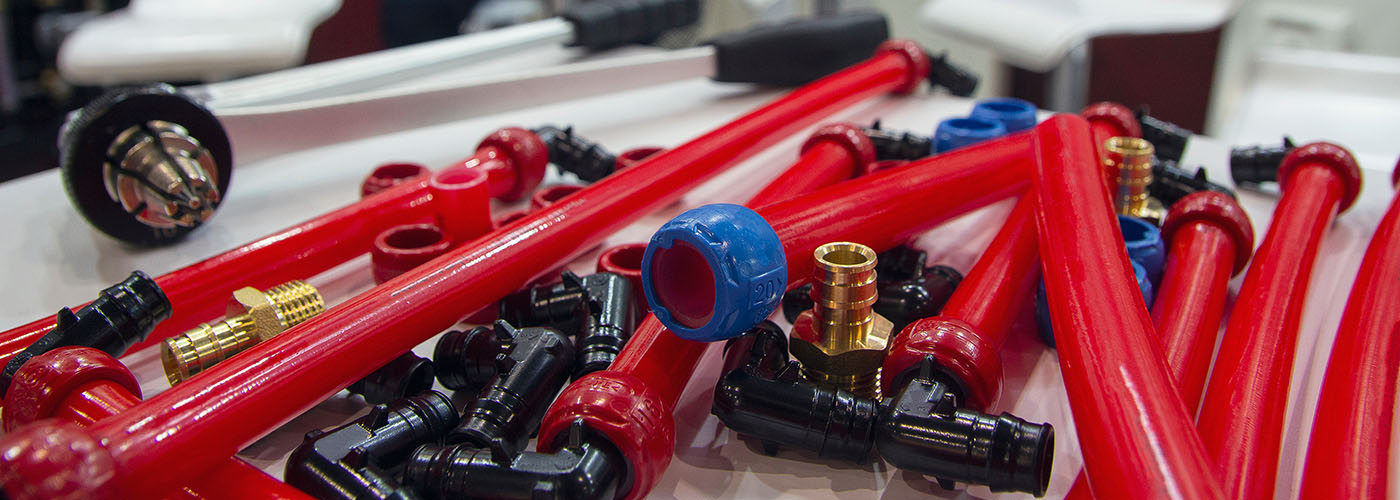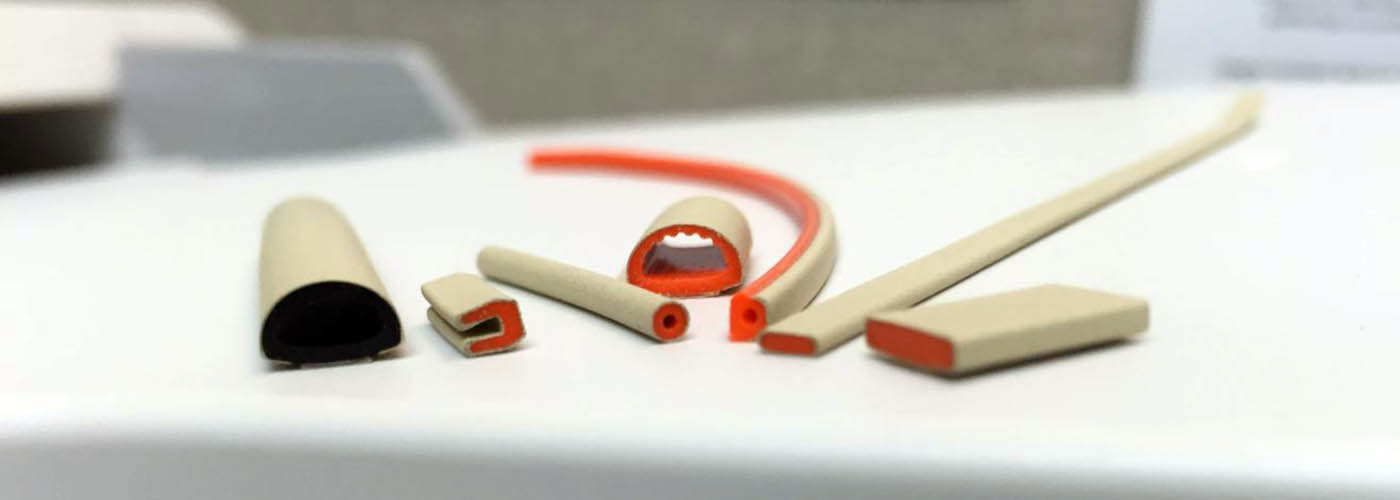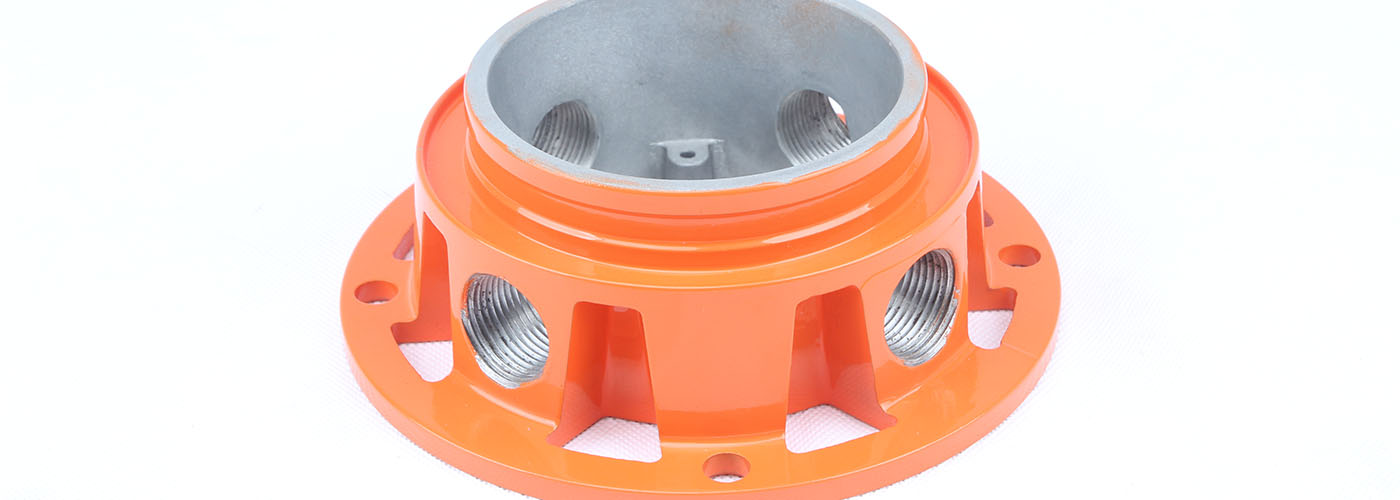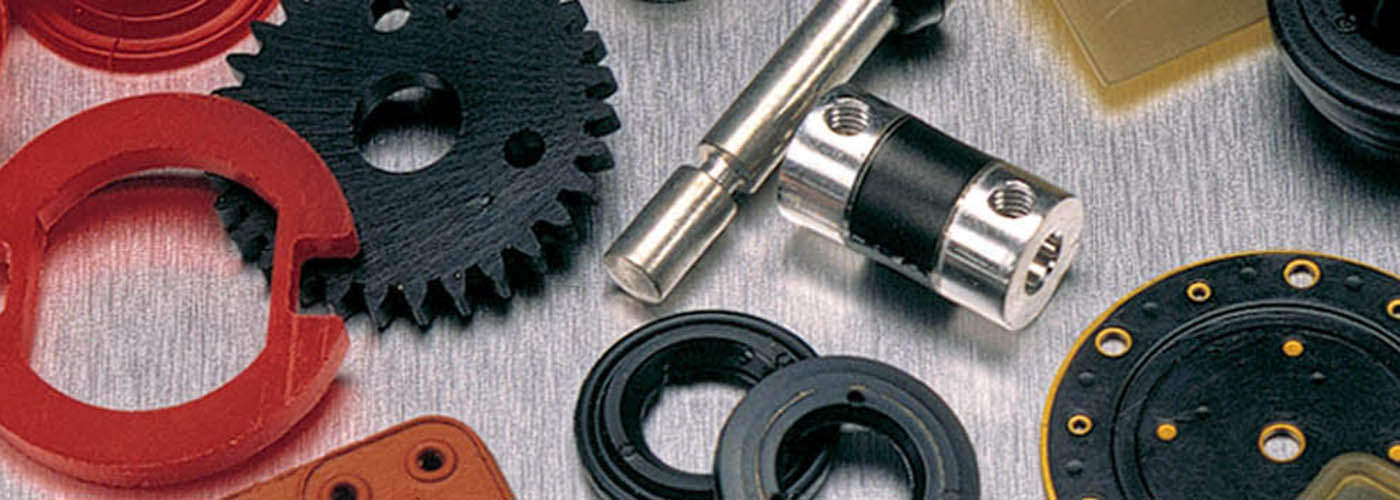Suggested Polurethane Machining Procedures
Because of the broad hardness and the difference in chemical composition of various methane compounds, it is difficult to prepare precise machining instructions. In most cases, the machinist will learn to evaluate cutting action by experience rather than relying on outlined data pertaining to tool geometry and machine speeds and feeds.
To obtain good surface finishes and satisfactory dimensional tolerances, it is necessary to have a combination of high tool speed and fine feed. Since polyurethane has a tendency to build heat rapidly, it requires a constant application of coolant. Razor-sharp cutting edges will produce the best results. A cutting edge that would be considered sharp enough for machinery metal might be completely unsatisfactory for urethane. Because of the elastomeric nature of the material, it is almost impossible to eliminate the tendency for the urethane to move away from the cutting tool when the cut his been started. For this reason, as well as distortion, care should be taken when clamping the work into position.
The softer urethanes will present more problems than the harder grades. The harder the urethane, the easier it is to maintain tolerances, surface finish, and production speed. Excellent finishes and high production speed are possible with a durometer of 95 Shore A and harder.
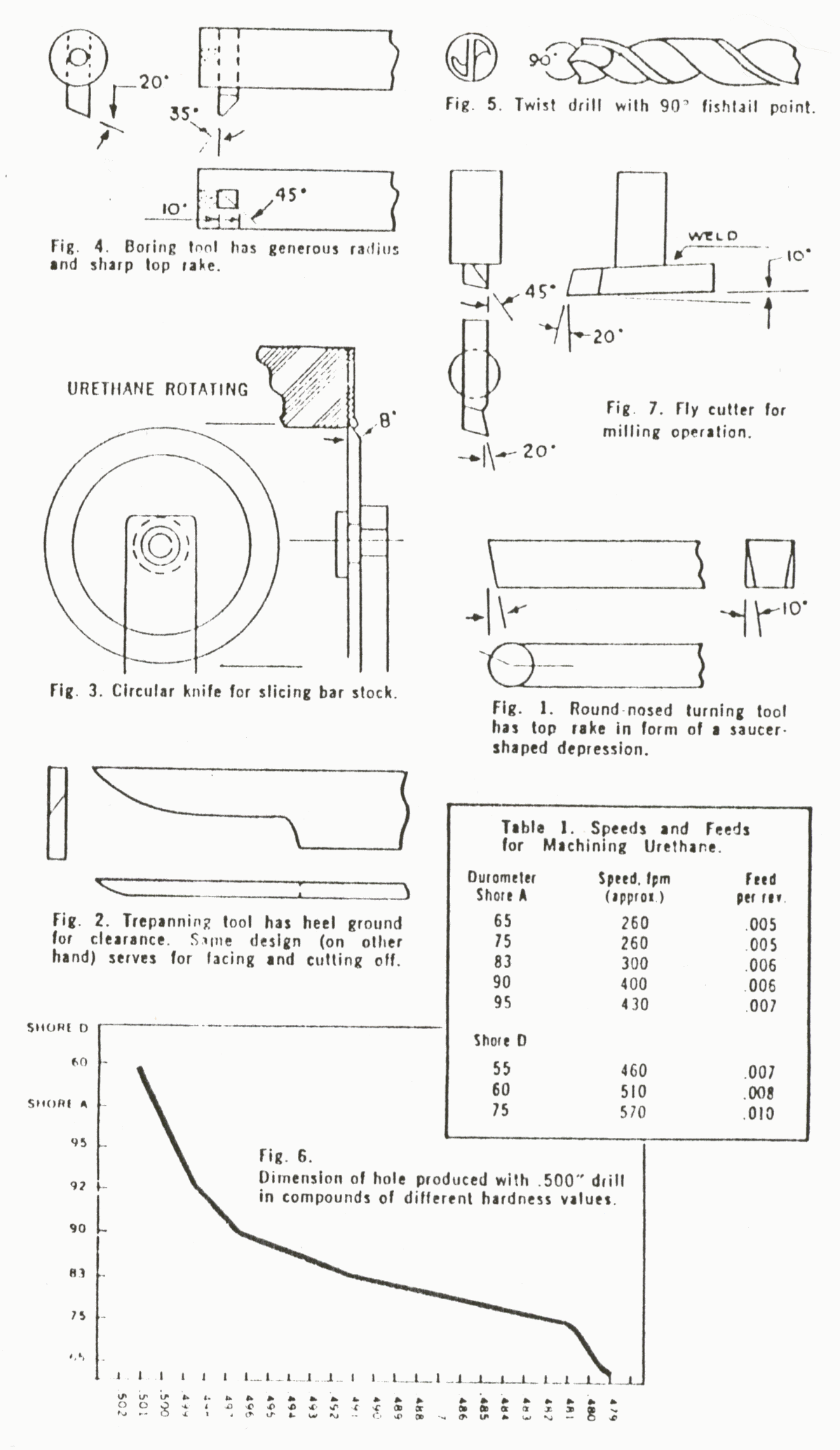 GRINDING
GRINDING
The best method of achieving a good finish and close tolerances is by grinding. A large volume of surface coolant is recommended to prevent heat build-tip. Best grinding results will be obtained using a 6"-dianieter, bubble-type coarse grinding wheel at around 7,000 Ft./Min. The work should be turning at 350 Ft./Min. while traversing at 3/411/Min. An 80 grit 200 grade poly-bond wheel will also produce good results. The wrong type of wheel will quickly gum arid clog.
CUTTING
11 Softer sheets, up to 75 Shore A, should be fabricated like rubber. Harder sheets should be fabricated like plastics. For soft sheets, up to 1/4" thickness, a rotating circular knife with liberal amounts of surface coolant will provide good results. Harder or thicker sheets may require a heavy duty sabresaw or bandsaw-type cutting action with a coolant. A knife-edged blade is recommended for softer durometers, a coarse tooth blade (about 6 teeth per inch) for harder formulations. Very thick sheets, 1" or over, may require, a traverse type overhead saw with coolant. The blade should have carbide teeth, about 10 per Inch. Guillotine type cutters may also work well on sheet stock.
TURNING
Generally hogging off large quantities of urethane is not necessary because urethane can be molded very close to the required dimensions. However, hogging Is 'feasible if the operator controls tearing. Turning with a round-nosed tool (See Figure 1) produces a fine chip. After Initial cut, subsequent cut S must o below any disturbed material In order to obtain a good finish. A surface speed around 375 Ft./Min. with a traverse speed around 3.511/Min. will normally obtain good results.
TREPANNING
Short parts are trepanned with a knife-type tool positioned parallel to the lathe bed and lightly fed Into the end of the urethane. An excellent finish is normally obtained with material having a durometer of Shore A 60 and harder (See Figure 2).
FACING
Facing and cutting off can be accomplished with round-nosed or knife-type tools, such as seen in Figures 1 and 2. The round-nosed type will produce better results on facing harder compounds. Bar stock is usually sliced with a circular-slitting knife. The blade (Figure 3) is excellent for slicing discs and has an included angle of 8 degrees. Boring of inside diameters can be accomplished with a boring bar (See Figure 4) or with the style of tool shown In Figure 2. The conventional boring bar should have a radius on the front of the tool and a sharp top rake. Longer holes can be made with this type tool rather thin the knife type.
DRILLING
A sharply honed, standard wood auger bit will produce the best drilling; however, an oversized drill is necessary because the drilled hole will be smaller than the drill size. A twist drill ground to the desired size is sometimes used instead of an auger drill (See-Figure 5). The correlation between hole size and material, harness is shown in Figure 6. Speeds and feeds of the drill appear to have little effect on the hole size obtained.
MILLING
Milling elastomers requires very sharp tools with much more clearance than required for other materials. Usually an excellent job can be done with a fly cutter (Figure 7). Distortions of work and heat build-up are two areas that require constant attention. Liberal amounts of coolant, moderate speeds, and a light feed will usually ensure good results. Steps, grooves, shoulders, etc., can he cut successfully with conventional metal working tools on higher durometer urethane. In reference to coolants and lubricants, a chlorinated wax cut concentrate, water and soap solutions, water and oil solutions, and silicone sprays have all produced good results

